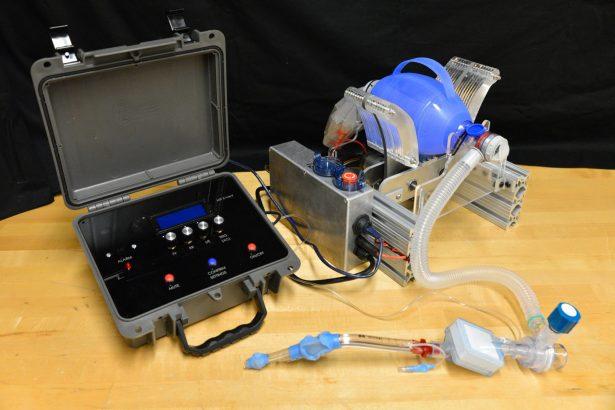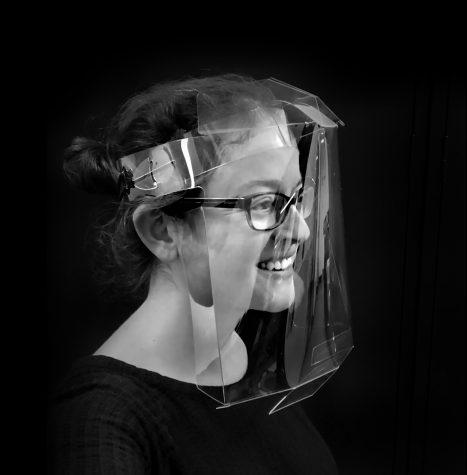
AS THE PANDEMIC UNFOLDED, THE MIT COMMUNITY QUICKLY ROLLED UP ITS COLLECTIVE SLEEVES AND WENT TO WORK. IMAGE: GETTY IMAGES
How the MIT community, including faculty affiliated with IMES, addressed the pandemic during the first few months of 2020
The first cluster of Covid-19 cases was reported to the World Health Organization on December 31, 2019. As the pandemic unfolded, the MIT community quickly rolled up its collective sleeves and went to work—contributing research, donating personal protective equipment, assessing economic impacts, teaching remote classes, and much more. This timeline provides a snapshot of MIT’s extensive efforts to address the crisis during the first few months.
January
A team of researchers at the McGovern Institute for Brain Research at MIT, the Broad Institute of MIT and Harvard, and other departments and centers begin developing tests for Covid-19 using SHERLOCK, a diagnostic tool based on the genome editor CRISPR.
February
The Cambridge-based biotech company Moderna announces it has an experimental vaccine ready to test. Moderna was founded in 2010 by Institute Professor Robert S. Langer ScD ’74, investor Noubar Afeyan PhD ’87, and researchers from Harvard Medical School (HMS). Langer is also a member of the affiliate faculty at MIT’s Institute for Medical Engineering and Science (IMES).
Chemical engineers at MIT’s Koch Institute for Integrative Cancer Research dive into work on a Covid-19 vaccine and on ways to ramp up future vaccine manufacturing.
March
MIT Emergency Management establishes the Covid-19 planning team and working groups on March 5. MIT Solve, which uses social impact challenges to tackle the world’s biggest problems, launches a $10,000 global challenge seeking innovations focused on prevention, detection, and response to Covid-19.

A GROUP OF RESEARCHERS WORKED ON AN OPEN-SOURCE, LOW-COST VENTILATOR.
On March 10, MIT announces all classes will move online on March 30. Undergraduates are asked to depart campus residences by March 17. The MIT E-Vent team—including mechanical engineering professor Alex Slocum Sr. ’82, SM ’83, the Walter M. May and A. Hazel May Professor, his son surgical resident Alexander Slocum Jr. SB ’08, SM ’10, PhD ’13, and MIT research scientist Nevan Hanumara MS ’06, PhD ’12— forms to work on rapid deployment of an open-source, low-cost ventilator first introduced in 2010 by a student team in Course 2.75 Medical Device Design.
Faculty and staff begin working from home on March 13. The MIT Abdul Latif Jameel Clinic for Machine Learning in Health forms AI Cures to apply machine-learning methods to finding promising antiviral molecules.
The Stanford-MIT Healthy Elections project launches, bringing academics and election administration experts together to address the unprecedented and ongoing threat that the pandemic poses to the 2020 elections.
Drawing on technology developed at IMES, startup E25Bio works to develop a quick paper-strip test for Covid-19. Students from MIT and Harvard University launch CovEducation, a mentoring platform that provides support for children while schools are closed. Lee Gehrke, Hermann von Helmholtz Professor in IMES, and a professor in Microbiology and Immunobiology at HMS, is the co-founder and a member of the Scientific Advisory Board at E25Bio.
MIT students collectively construct a 1:1 scale replica of MIT online in Minecraft. The MIT Innovation Initiative begins work on the Covid-19 Rapid Innovation Dashboard, which will become a hub of MIT’s Covid-19-related activities. A team of MIT chemists reports designing a drug candidate that may block coronaviruses’ ability to enter human cells.

MIT STUDENTS COLLECTIVELY CONSTRUCTED A 1:1 SCALE REPLICA OF MINECRAFT.
Economists, including MIT’s Iván Werning, argue that the supply shock of Covid-19 has led to an even larger demand shock, as affected workers lose income and all consumers cut back on spending, and that policy responses are needed to address both types of shocks.
MIT researchers and colleagues propose repurposing a blood clot drug—a protein called tissue plasminogen activator—to aid Covid-19 patients in acute respiratory distress. The Covid-19 Policy Alliance, a team of MIT faculty and experts, maps the most risk-prone counties in the United States.
More than 50 departments, labs, and centers—as well as individual community members, including alumni and friends around the world—donate personal protective equipment to health care workers. Mail Services and Custodial Services team up to get thousands of items to area hospitals.
Roughly 1,200 MIT subjects move to a remote teaching and learning model. A website developed by the Teaching and Learning Lab, Open Learning, and Information Systems and Technology provides soup-to-nuts instructions on preparing classes for remote delivery.

MIT INITIATES THE MASS MANUFACTURE OF DISPOSABLE FACE SHIELDS, SPEARHEADED BY PROJECT MANUS.
MIT initiates mass manufacture of disposable face shields for Covid-19 response. MIT’s Project Manus, led by mechanical engineering professor Martin Culpepper SM ’97, PhD ’00, spearheads the project in collaboration with a number of MIT and community partners, including physician Elazer R. Edelman ’78, SM ’79, PhD ’84, director of IMES and the MIT Medical Outreach Team, and the Edward J. Poitras Professor at IMES.
*Originally published in MIT Spectrum: https://bit.ly/3eVDBA5
